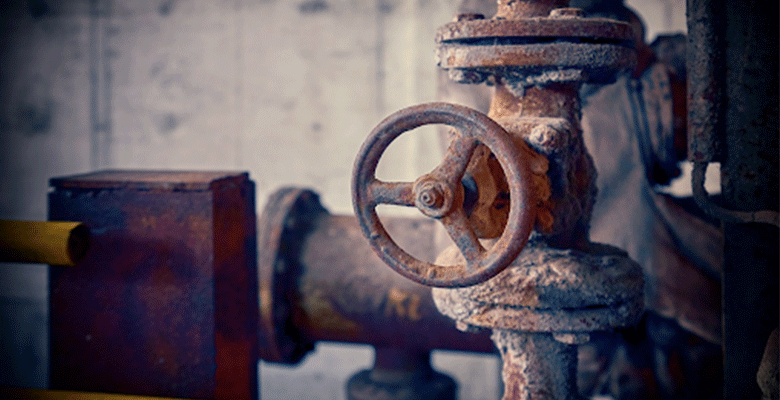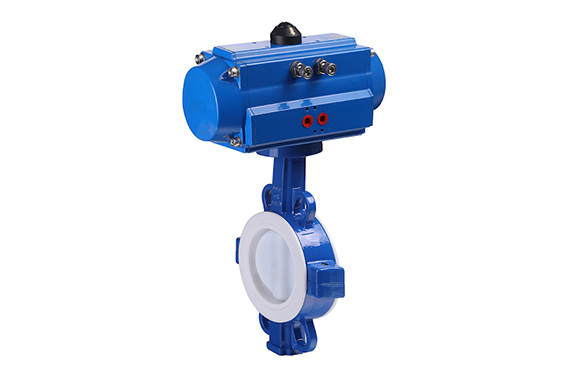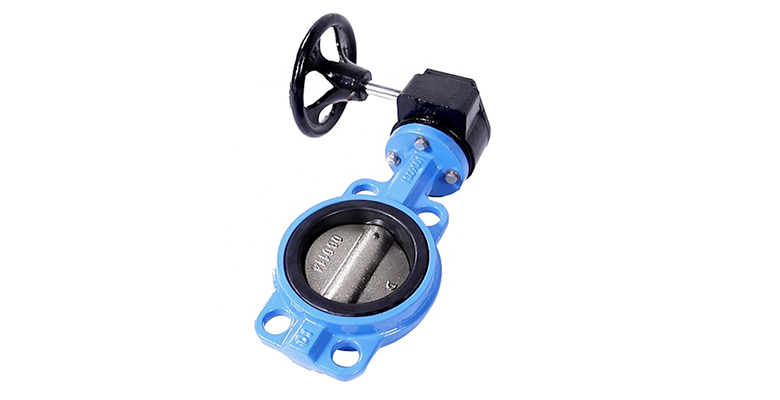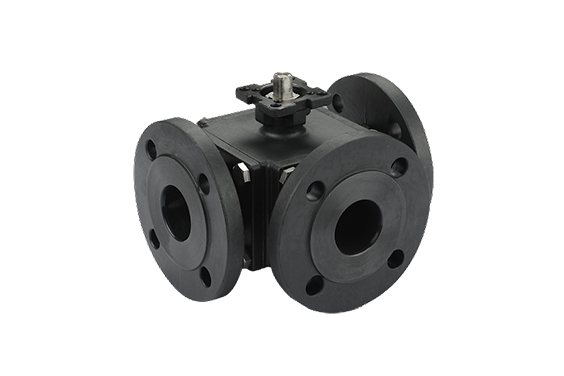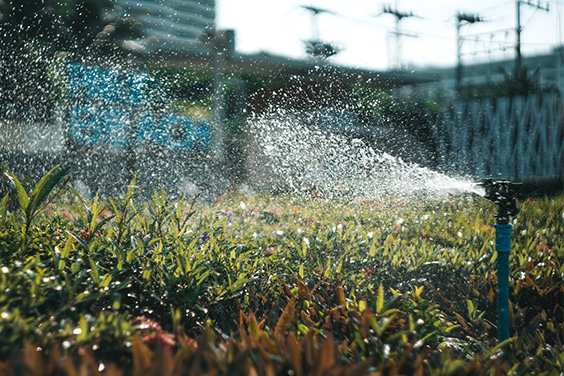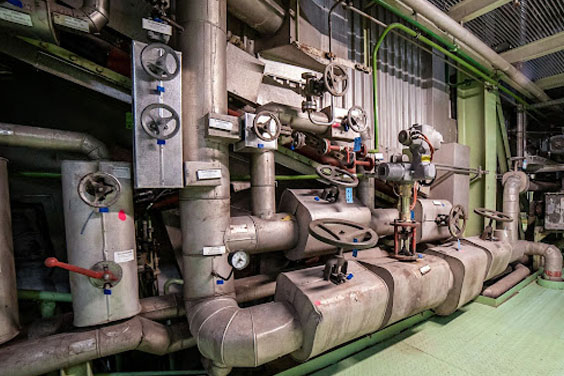
Source: Unsplash
Industrial valves are an essential part of a system as they are used to control and regulate the flow of liquids or gases in a medium. There are different types of industrial valves each with a specific function in a particular pipeline. They work hand in hand to ensure the smooth running of a given process. In this blog, we are going to look at one of the most common industrial valve types that is found in the majority of pipelines, the control valve.
What is A Control Valve?
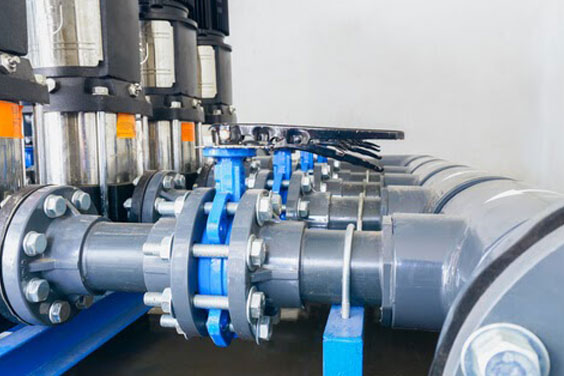
Source: Pinterest
A control valve is an industrial valve that is used in a pipeline system to control the flow of liquid or gas and prevent backflow in a system. They also regulate pressure and temperature in a system. A control valve is an essential part of a system and is the most common control tool used in processing and production pipelines. Control valves can be operated electrically, hydraulically, or pneumatically by the use of actuators.
There are different types of control valves that are classified into different categories and vary in shape, design, and function. The choice of a control valve is determined by the kind of system and the type of liquid or gas that the valve is supposed to handle. Control valves are the go-to choice of valves for highly demanding operations that require utmost precision. In this blog, we are going to look at the various types of control valves, outlining their features and applications in different industries.
What is a Control Valve Symbol?
A control valve symbol is a representation of any particular control valve without having to state the name of the valve. Control valve symbols are very important as they give a direction on the flow within a pipeline. The control valve symbols on a Piping and Instrumentation diagram differ depending on the type of valve and the functions and applications of a particular control valve. There are standard control valve symbols for each control valve that identify them in a system.
Control Valve Types and Applications
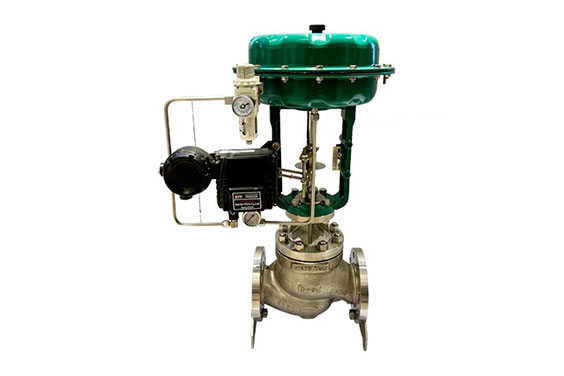
Source: SIO Valve
Control valves are classified in different ways, mostly by design and function. When it comes to design, control valves are classified either as linear or rotary motion valves. Linear motion valves have an actuator that moves in linear motion, while rotary valves actuators move in a circular motion.
Linear Motion Control Valves
The linear motion control valves are the most common type of valves found in the market today. Their design is simple, and they are very easy to maintain. Linear valves are also known as multi-turn valves. These valves come in different sizes and designs, giving you a wide range of options to choose from. Linear valves may be quite costly, but they are definitely worth the investment. These kinds of control valves can withstand the high pressure of liquids without wearing out. Let us have a look at some of the most common types of linear motion control valves we have in the market today.
Globe Type Control Valve
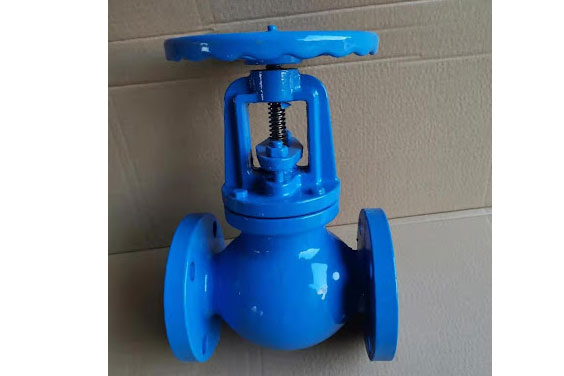
Source: Pinterest
A globe valve is a type of control valve that is used to regulate liquid or gas flow in a pipeline. It consists of a disc that is movable and a motionless ring seat that is round-shaped. Globe valves get their name from their globe-shaped bodies. Globe valves can be configured to control liquid flow in different directions. There is a baffle inside the globe valve that causes a diversion in the flow of liquid or gas in the system. Let us have a look at the different parts of a globe type control valve.
- Bonnet: This is the outer part of the globe valve that holds the key parts of the valve.
- Stem: The stem is the part that connects the disk and the actuator of the globe valve.
- Cage: This is the part that surrounds the stem of the globe valve.
- Plug: The plug is the part of the globe type control valve that provides a barrier and restricts the flow of liquid within a pipeline. The plug, also known as a disk, is categorized in three categories namely ball disc, needle disk, and composite disk.
Although globe valves are designed to withstand low-pressure systems, they are not ideal for systems with thick liquids that have extremely low-pressure levels. There are three body designs for globe valves which include;
- Tee globe valve: The tee body-shaped globe valve is the most common type. It has a horizontal seat with the disk sitting in at a 90 degrees angle on the seat. This design of the globe valve is the most efficient and can accommodate extreme pressure drops in the system. This is your ultimate go-to globe valve in instances where pressure drop is not a major concern.
- Angle globe valve: The bottom ends of this globe valve sit at a 90 degrees angle and allow liquid to flow in a 90 degrees turn. This design of globe valve can handle low pressure liquids, commonly referred to as the slugging effect.
- Wye globe valve: This design of globe valve is y-shaped and is mostly used in high-pressure systems. The seat of this valve lies at a 45 degrees angle and enables a linear flow of liquids or gas through a pipeline.
Applications of the Globe Valve
The globe type control valve is used in a wide range of pipelines to regulate the flow of liquids and gases. We have determined that this control valve type is ideal for both high pressure and low-pressure systems, depending on the body design of the globe valve. Here are some of the most common applications of the globe type control valve.
- Globe valves are used in fuel oil systems to regulate the flow of liquid and prevent leaking.
- Water cooling systems to control the flow of liquid.
- Chemical feeding systems and drain systems
- Boiler systems and heater drains
- Globe type control valves are also used on board ships to control the flow of water.
Advantages of Globe Valves
- Globe valves are easy to shut off.
- Globe type control valves are available in a variety of designs and sizes.
- They can handle both low and high-pressure systems.
- They can be easily reconfigured to suit a system’s needs.
Disadvantages of Globe Valves
- Globe valves tend to have high resistance of flow as compared to other types of control valves.
- Globe valves are not the ideal option for liquids and gases with large particles.
Gate Valves

Source: Pixabay
A gate valve is a type of control valve that uses a gate type of disk to control the flow of liquid in a pipeline. It is the most common control valve type that is used in the majority of processing plants. A gate valve and a globe valve may look similar but the two function differently. When in use, gate valves are usually fully closed or fully opened. The disk of a gate valve is usually completely removed when the valve is fully open therefore causing no resistance to the flow of liquid. Gate valves are not suitable for high velocities as it can cause erosion and damage of the valve. There are different types of gate valves which include;
- Flexible Wedge Gate Valve: This is a control valve type that has a single piece of solid disk that is cut in varied size, shape and depth. This type of gate valve offers better control of liquid flow and prevents leaking. Flexible wedge gate valves are mostly used in steam systems. However, these types of gate valves usually have liquids accumulating in the disk of the valve, which may cause corrosion of parts and eventually damage the valve.
- Solid Wedge Gate Valve: This is the most common type of gate valve used due to the strength and simple design of the valve. It can be installed in any position and is ideal for all kinds of liquids. It can also be used in very high-pressure systems.
- Split Wedge Gate Valve: This control valve type consists of two pieces that are held together. The split wedge gate valve can either be in a wedge or parallel shape. This gate valve is most ideal for high-temperature systems.
Gate valves are also categorized by their body and bonnet design. Some of the different bonnet connections of gate type control valves include;
- Screwed bonnet: The simplest bonnet connection that is used for price-friendly gate valves.
- Bolted bonnet: This is the most common bonnet connection that uses a gasket to join the body of the valve to the bonnet.
- Welded bonnet: With this kind of connection, you do not need to disassemble the gate valve. They are light weight as compared to other bonnet connections.
- Pressure seal bonnet: This type of connection is mostly used in high pressure and high temperature systems.
Applications of the Gate Valve
This control valve type is used in different industries to regulate and control the flow of liquids and gases in piping systems. Some of the most common applications of the gate valve include;
- Gate valves are used in water distribution pipelines to control flow and prevent liquid water leakage.
- This control valve type is also used in water and chemical feeding systems to regulate liquid flow.
- Gate valves are also used in fuel and gas systems.
Advantages of Gate Valves
- Gate valves have a very convenient closing feature.
- They are energy-efficient due to the less power that is consumed when closing and opening the gate valve.
- Gate valves allow for the dual direction of flow of the medium. This makes them ideal for pipelines that are likely to experience a change in direction of flow.
- Due to linear flow, gate valves express very minimal pressure loss.
- Due to the valve’s tight sealing, it is less prone to erosion as compared to other control valve types.
- The simplicity of the body of the gate valve makes it easy to operate.
Disadvantages of Gate Valves
- This control valve type experiences more friction during opening and closing due to the large sealing surface.
- The gate valve consumes a lot of time during opening and closing as a result of the two sealing surfaces on the valve
Diaphragm Valves
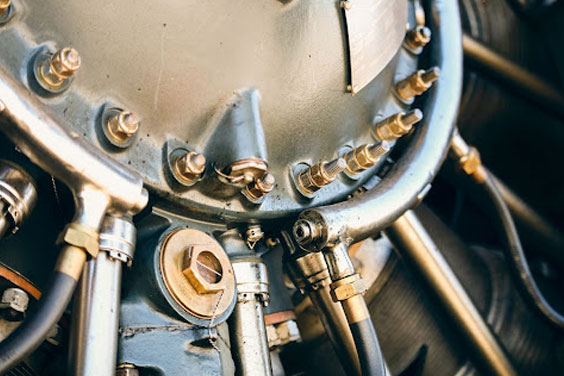
Source: Unsplash
Diaphragm valves are also known as membrane valves and they have a bi-directional feature allowing the valve to control and regulate medium flow within the pipeline. They are referred to as diaphragm valves because of their thin membrane that is used to control the opening and closing of the valve.
This control valve type can be made with plastic and stainless steel. A diaphragm valve comes with separate pressure control features and they can be controlled both manually and by the use of automated actuators. These control valves are easy maintenance and are less prone to leakages. They are most used in medium pressure systems with moderate temperatures. There are different types of diaphragm valves which include;
- Weir-type diaphragm valve: This is one of the most common types of diaphragm valve. Its raised saddle is most ideal for medium flow systems. It is a leak proof valve due to the bonnet location over the membrane and control. This diaphragm valve is used in high corrosive pipelines as the bonnet can handle anything that the diaphragm is not able to handle. Its sloppy shape enables this valve to drain itself as opposed to other types of control valves. This control valve type is used in food and chemical production pipelines.
- Straight through-type diaphragm valve: The structure of this valve is almost similar to the weir-type valve, minus the saddle feature, which gives it a linear pathway. The membranes of the straight-through-type valves are more flexible and can accommodate a longer flow distance. However, these control valve types require constant maintenance due to their short lifespan. They are also used for double-direction flows and are most suitable for thick liquid pipelines that do not require too much blocking.
Applications of Diaphragm Valves
- The pulp and paper industry
- Diaphragm valves are also used in mineral mining processes.
- Chemical production pipelines.
- Power production systems.
- Pharmaceutical processing systems.
Advantages of Diaphragm Valves
- Can withstand high corrosion pipelines.
- They are leakage-proof.
- They have an on and off throttle feature.
Disadvantages of Diaphragm Valves
- The material of the membrane determines the working temperature and pressure.
- In instances where the medium contains impurities, the diaphragm may experience corrosion over time.
Rotary Motion Control Valves
A rotary motion control valve is a valve with a directional valve that moves in rotary motion. This control valve gets its name from the shape of its closure.This control valve type is able to withstand a high pressure system with zero leakage. The following are the different types of rotary motion control valves available in the market today.
Ball Valve

Source: en.siovalve
The closure part of the ball valve is shaped like a ball, hence its name. This control valve type allows liquid to flow straight and then shuts off when the rotary ball is at a 90 degrees angle. The ball valve works mostly in shut-off systems but can also be used to start, stop and regulate the flow of liquid in pipelines with high velocity flows.
Applications of a Ball Valve
- Home appliances such as washing machines and dishwashers
- Oil and gas production systems
- Car Wash machines
- Power processing plants
- Water treatment and irrigation
- Pharmaceuticals
Advantages of a Ball Valve
- Swift turn-off speeds
- It is less prone to corrosion
- It has a long lifespan
- It is cost-friendly
Disadvantages of a Ball Valve
- In the case of particles in the medium, the ball valve gets damaged easily.
- It is available in a fixed size range, and you will have to spend more to have a bigger size customized for you.
Butterfly Valves
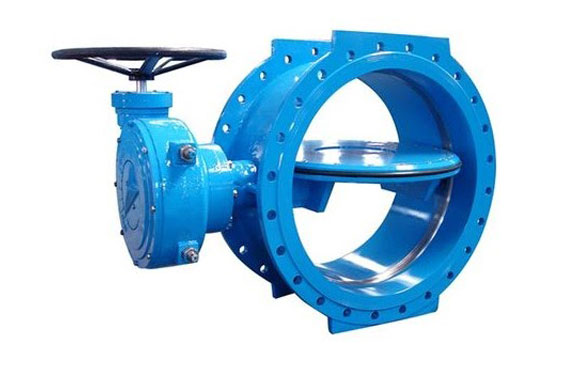
Source: Pinterest
This control valve type is almost similar to the ball valve and the only difference between the two is that a butterfly valve is only used in shut-off systems. This valve is not recommended for controlling medium flow in a pipeline. The butterfly valves also have a two-directional flow and turn-off feature. Butterfly valves can be controlled in different ways, majorly;
- Electric actuation: The use of an electric actuator to control the valve mostly used for high demand systems that require maximum precision.
- Hydraulic actuation: This is mostly used in high pressure systems.
- Pneumatic actuation: This is the use of compressed air to control the valve. Also used in systems that require high accuracy.
- Manual actuation: Most manually controlled butterfly valves use hand wheels and levers to control the valve.
There are different types of butterfly valves which include;
- Triple offset butterfly valves: These are high-performing control valve types that are mostly used in off-shore locations with extreme conditions. This control valve type is usually made up of a metal seat and disc.
- Thermoplastic butterfly valves: These control valve types are available in wafer designs which make them suitable for low-pressure applications.
- Inflatable seated butterfly valves: This control valve type has an inflatable seat that creates a seal around the disk of the valve. This butterfly valve type requires less turning force due to the fact that the seal is configured after the closure.
Applications of Butterfly Valves
- Water cooling systems
- Vacuum services
- Slurry systems such as cement mixers
- High-pressure steam systems
Advantages of Butterfly Valves
- They require minimal material, making them an inexpensive control valve option.
- They require less space due to their compact design and size.
- They are easy maintenance control valve types.
- Butterfly valves have a longer lifespan in comparison to other control valve types.
Disadvantages of Butterfly Valves
- They cannot be used for throttling flows.
- The sealing function of the butterfly valve is not strong enough.
- Operation of a butterfly valve at times results in pressure switches.
Plug Valves

Source: Google
This control valve type is used to control the flow of medium in high-pressure systems. Plug valves can be used for both shut-off systems and throttling flows. They are simple devices that use cylindrical plugs that rotate inside the valve to perform its functions. The plugs contain cut channels that allow liquid or gas to pass through them. These control valve types are very easy to use which makes them the go-to choice of control valve. There are different types of plug valves based on the number of ports and benefits of the control valve. These are the two types of plug valves based on ports;
- Two-port plug valves: This control valve type comprises two ports that allow the medium to flow in and out of the valve. The two ports lie on the side-by-side ends of the valve.
- Multi-port plug valves: As the name suggests, this control valve type contains several ports that control the flow of liquid or gas in a piping system.
The three types of plug valves based on benefits include;
- Lubricated plug valves: These control valve types use lubricants made of oil to reduce the friction between the body of the valve and the seat.
- Non-lubricated plug valves
- Eccentric Plug Valve: These control valve types are used in various systems that include both clean and sewage pipelines.
- Expanding plug valve
Applications of Plug Valves
- Processing of corrosive substances.
- Oil processing systems
- Chemical processing plants
- High-pressure flow systems
- High-temperature flow systems
Advantages of Plug Valves
- They have a simple design that is easy to configure.
- They have a low resistance to flow.
- They are easy maintenance, and repairs can actually be carried out at the operating site.
- They can easily open and close.
- Plug valves are resistant to corrosion, therefore they can handle chemical processing without causing any damage to the valve.
- They are highly efficient and have a long lifespan as compared to other control valve types.
Parts of a Control Valve
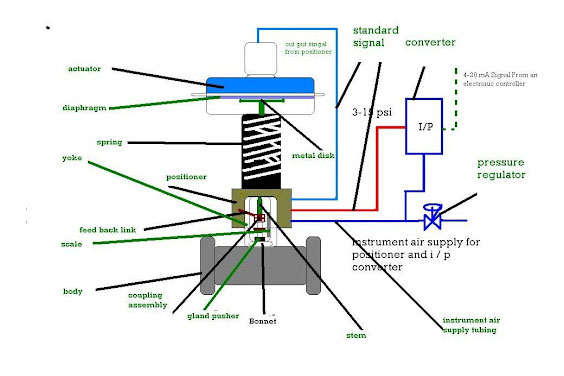
Source: Pinterest
Despite the different types of control valves that we have discussed above, there are main parts of a control valve that are common to all control valves. These parts are what makes up the valve and enable it to perform its various functions. Some of the basic parts of a control valves are as follows;
1. Actuator
This is the part that controls the valve. Actuators are classified in different categories, mainly electric, hydraulic, pneumatic, and manual actuators. The actuator part comprises the following components;
- Yoke: This is the device that connects the actuator to the valve body.
- Diaphragm: This is a flexible component that changes the power traveling to the diaphragm plate.
- Eye bolt: Used for moving the valve.
- Rain cap: This prevents liquids from getting into the actuator.
2. Valve Body Part
The valve body, also known as the shell, is the outward structure of the control valve. It is the frame that holds together all the other parts of the valve. There are different valve body designs according to the shape and the material used on the valve. The most common shapes of valves include t shapes and y shapes, and cylindrical shapes. The shape of a valve matters a lot due to the fact that the body resists liquid pressure with the help of the other parts of the valve. The most common materials used on valve bodies include iron, steel, and stainless steel.
3. Valve Bonnet
The bonnet is the cover of the valve body. In some instances, the valve body is divided into two parts that are joined together, the top part being the bonnet. Some valve bonnets function fully as valve covers, while some hold other parts such as the actuator and stem.
The bonnet is usually made up of the same material as the valve body, it is then bolted or threaded onto the valve body. Valve bonnets can cause complications such as leaking if they are not properly connected to the valve body or they are made out of substandard material.
4. Valve Disk
After the bonnet, the valve disk or seat is the third most important part of a control valve. It provides the ability of the valve to control liquid flow. Valve disks are usually made up of strong material that have the ability to withstand high pressure without getting damaged. In some instances, the valve bottom of the valve body functions as the seat of the valve, other times seal rings are used threaded on the body of the valve to provide the seating.
5. Valve Stem
This is the part that connects the actuator and the seat of the valve. They are usually bolted or threaded to the disk of the valve. There are two different types of valve stems which include rising stems and non-rising stems.A rising stem rises above the actuator when the valve is opened while the non-rising stem does not.
Control Valve Installation and Maintenance
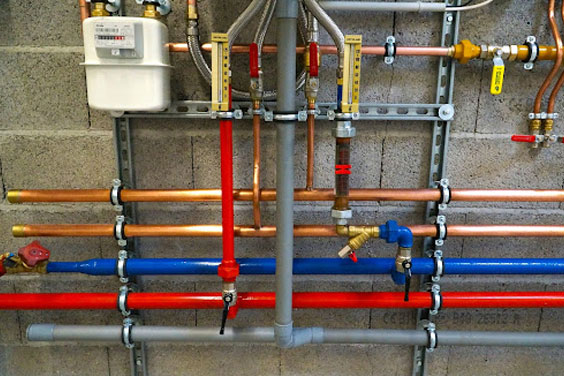
Source: Pixabay
The efficiency of a control valve pretty much depends on how it is installed, among other factors. This is obvious for all other equipment that require accurate installation before they can function properly. For instance, a washing machine can only function accordingly after you have installed it correctly. Control valve manufacturers usually include installation manuals for different types of control valves that provide you with the tips and guidance on how to set up your control valve. Some of the most common tips for control valve installation include;
- Use sealant on threaded valves: This will prevent leaking and will also offer protection to the threads of the control valve. You can either use tape or pipe dope as sealants for your control valve.
- Tighten the flange connection using the star pattern: This ensures that there is uniformity in the tightening of the flange. One side being tighter than the other does not offer tight sealing and will most likely result in leakages. Also, replace damaged gaskets to avoid valve problems.
- A control valve should be mounted vertically: Mounting a control valve in a sideways position the weight of the other parts of the valve on one side, which will cause damage to the valve stem and packing over time. Horizontal positioning also inhibits lubricating oils from reaching the stem of the valve which will make the stem wear out faster. Always ensure that your control valve is mounted in an upright position.
- Consider the location of the control valve: The location of a control valve should enable you to carry out any repairs when necessary. The location should also prevent the formation of bubbles at low pressure regions of the system. Avoid placing a control valve near extreme heat, and those that handle flammable liquids should be kept away from delicate system parts such as pumps.
Control Valve Maintenance Tips
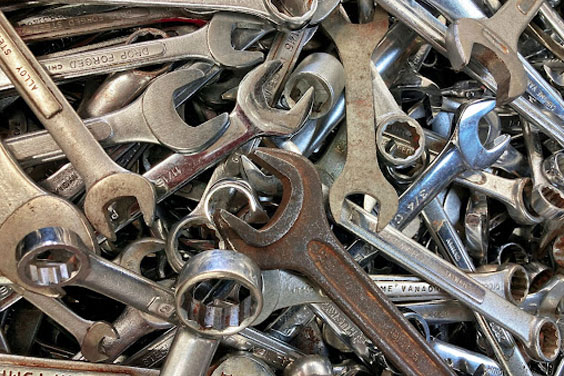
Source: Unsplash
It is important to take good care of your control valve so that it can function well and last you a long time. Some control valves are delicate and require frequent checks to ensure that they are in good working condition. Below are some basic control valve maintenance tips.
- Carry out regular physical inspections of your control valves: Make it a point to inspect your control valves at least three or four times in a year or more. During the physical checks, look for any signs of leakage and figure out what is causing it. This will enable you to carry out any necessary repairs on your control valve.
- Include strainers in your system to protect the main parts of your system, control valves included.
- Always clean the strainers in your system. Strainers are used to trap any solid debris from liquids and gases from damaging important parts of a piping system, which include control valves. Clogged strainers will not do the job they are supposed to do and will therefore pose a risk to your valves.
- You can also install software that can help you monitor your control valves and alert you whenever they are not working the way they should. Electric actuators can predict things such as valve speeds, rotating force among other variables.
Control Valve Packing

Source: Google
This is the sealing of the control valve which consists of flexible material in solid form contained in a control valve packaging box. Control valve packing is essential to provide a pressure seal between the valve fluid and the exterior atmosphere. The choice of packing for a control valve should consider the following factors;
- Working pressure: High working pressure requires firm packing rings which are able to withstand the high pressures. In vacuum systems, the packing should be able to protect the other parts of the control valve to ensure that they work efficiently.
- System temperatures: This is the most critical factor that should be considered when selecting control valve packing. Control valves for high temperature systems should be able to accommodate the conditions without failing. Temperatures above 250 degrees celsius can only be withstood by pure graphite as packing material.
- Liquid characteristics: Before selecting packaging for your control valve, start by understanding the characteristics of the liquid that the control valve will be used for. If the fluid is highly corrosive then you might want to consider special packing for your control valve. The packing should be able to protect your control valve from wear and tear from the abrasive liquids.
What to Consider Before Buying Control Valves

Before purchasing any kind of device or equipment, there are a number of factors that you should consider to ensure that you end up with the right one for your needs. Most people go through reviews and analyse the features of a mobile phone before buying it. This applies to control valves too, especially due to the fact that there are several control valve types that work in different ways. Some of the common factors to parameters to consider before buying a control valve include the following;
- Control Valve Material
The material used for a control valve is of utmost importance when selecting a control valve for your system. The kind of material is also determined by the type of liquid and gas that you are working with in your pipeline. There are common types of materials used for control valves which include;
- Bronze: Due to its resistance to corrosion, bronze is commonly used in valves that are used in highly corrosive systems with low to medium temperatures. Bronze is a mixture of copper, zinc, tin, and lead.
- Brass: Brass is a combination of copper and zinc, and it is used in economical control valves that are price friendly.
- Cast iron: In cast iron control valves, a lining is created with the use of nylon and epoxy resin to prevent rusting of the inner lining of the valve. This is recommended for drinking water supply pipelines.
- Cast steel: This kind of material is ideal for varied pressure and temperature systems. Cast steel valves are commonly used in oil refinery plants.
- Stainless steel: Stainless steel is highly resistant to corrosion and is used in control valves used in chemical processing plants.
- Control Valve Material
The material used for a control valve is of utmost importance when selecting a control valve for your system. The kind of material is also determined by the type of liquid and gas that you are working with in your pipeline. There are common types of materials used for control valves which include;
- Control Valve Standard
There following are the common standards for different control valves;
- ANSI Valve Standards: The American National Standards Institute is a private company that sets the standards for different products and services. The various control valve standards set by ANSI include ANSI AI26( grey iron castings for valve flanges and pipe fittings), ANSI A181( standard forged steel pipe flanges and forged fittings and valve parts for general service), ANSI B16.10( Face-to-face and end-to-end dimension of ferrous valves), ANSI B16.34( Steel valves), ANSI B127.1( Constant-level oil valves)
- UPC Valve Standards: Uniform Plumbing Code governs the installation and installation of plumbing systems including pipes, pumps and valves to ensure the safety of the general public. The UPC ensures that the consumer is provided with clean and sanitary plumbing systems.
- Underwriters Laboratories(UL): The UL ensures that valves used for fire systems are tested for performance to ascertain their efficiency. They also offer customization of valves to meet their standards. UL can come to your laboratory for testing to save you the time and costs of having to travel to their laboratory in Northbrook, Illinois.
- Control Valve Sizes
The size of a control valves should enable it to operate at atleast 80% in any given system. A small sized control valve will not be able to handle high velocity liquids, while an extra large control valve might not fit in the system. A large size control valve is also very sensitive to extreme operating conditions. Follow these sizing guidelines when choosing a control valve. Always ensure that you consult your control valve manufacturer and ask them to help you analyze your system before settling on the right size of a control valve.
- Working Pressure
The working pressure, also known as Maximum Allowable Working Pressure(MAWP) is the highest pressure level that a control valve is built to handle. When the valve is subjected to pressures that exceed that, the valve starts to fail, beginning with the major parts like the diaphragm and the body of the valve. Some of the pressure ratings include;
- PN: Pressure Nominal is the pressure that a system, including pipes, pumps and control valves, is built to handle. Anything above that poses a risk to the entire pipeline and will likely compromise the whole system.
- PSI Rating: The PSI rating of a system is the amount of pressure required by a system to perform a particular operation. Once the pressure drops, the various equipment in the pipeline system probably need to be checked for any issues. You can monitor the psi by installing pressure gauges to enable you to study the different pressure patterns in your system.
Conclusion
Control valves are a major part of a piping system that should be given top priority. We understand that selecting the right control valve type for your system might be an uphill task, and that is why we have provided you with this analysis of the different control valve types. For more information on control valves and other types of industrial valves, check out us, one of the control valve suppliers. Do not hesitate to contact us in case of any inquiries.



